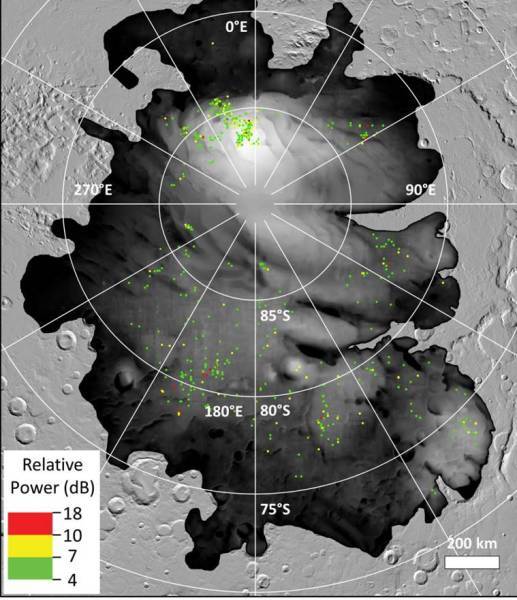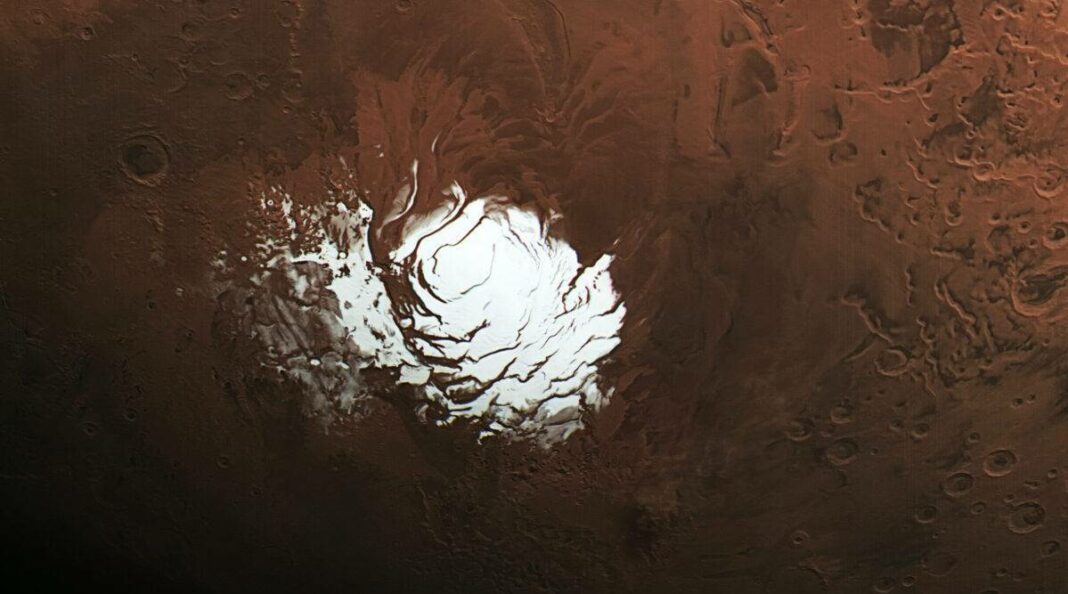In 2018, the European Space Agency’s Mars Express spacecraft detected some bright radar reflections at the ice-covered south pole of Mars. Scientists suspected that they were looking at liquid water at about 1.4 km under the ice. However, a new study published yesterday states that the reflections may be caused by volcanic rock buried under the ice.
“For water to be sustained this close to the surface, you need both a very salty environment and a strong, locally generated heat source, but that doesn’t match what we know of this region,” said the study’s lead author, Cyril Grima, a planetary scientist at the University of Texas Institute for Geophysics in a release. The findings were published in the journal Geophysical Research Letters.
 The colored dots represent sites where bright radar reflections have been spotted by ESA’s Mars Express orbiter at Mars’ south polar cap. (ESA/NASA/JPL-Caltech)
The colored dots represent sites where bright radar reflections have been spotted by ESA’s Mars Express orbiter at Mars’ south polar cap. (ESA/NASA/JPL-Caltech)The team used the data from Mars Advanced Radar for Subsurface and Ionosphere Sounding (MARSIS), a multi-frequency radar sounder on board the Mars Express spacecraft which is still operating today, providing about 15 years of measurements.
The team explains that on Earth too, rocks formed by lava flows reflect radar in a similar way.
Last year, a paper published in the same journal had said that clay minerals might be creating the mysterious signals.
Clays, not water, may be the source of “lakes” detected on Mars, according to a new study. It’s one of three in the last month in which scientists took a closer look at radar data peering under the ice of the Martian south pole. https://t.co/mI85NFjnBE pic.twitter.com/VYbU7ulzVB
— NASA JPL (@NASAJPL) July 29, 2021
Isaac Smith, a Mars geophysicist at York University, who was not involved in the study added: “I think the beauty of Grima’s finding is that while it knocks down the idea there might be liquid water under the planet’s south pole today, it also gives us really precise places to go look for evidence of ancient lakes and riverbeds and test hypotheses about the wider drying out of Mars’ climate over billions of years.”
Dr Cyril Grima and Dr Isaac Smith are now working on proposed missions to find water on Mars with radar. This will help find future human landing sites and also search for signs of past life.
